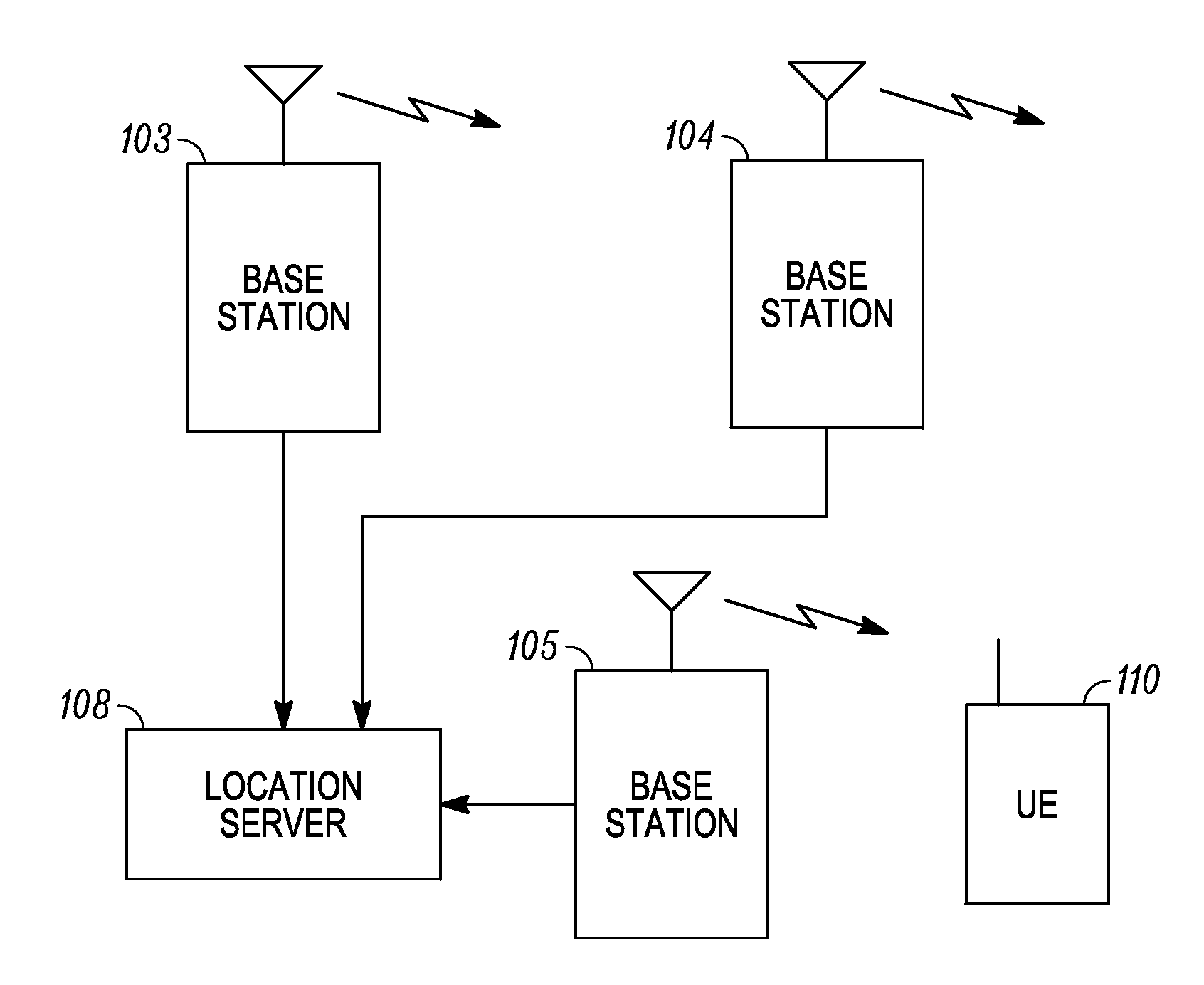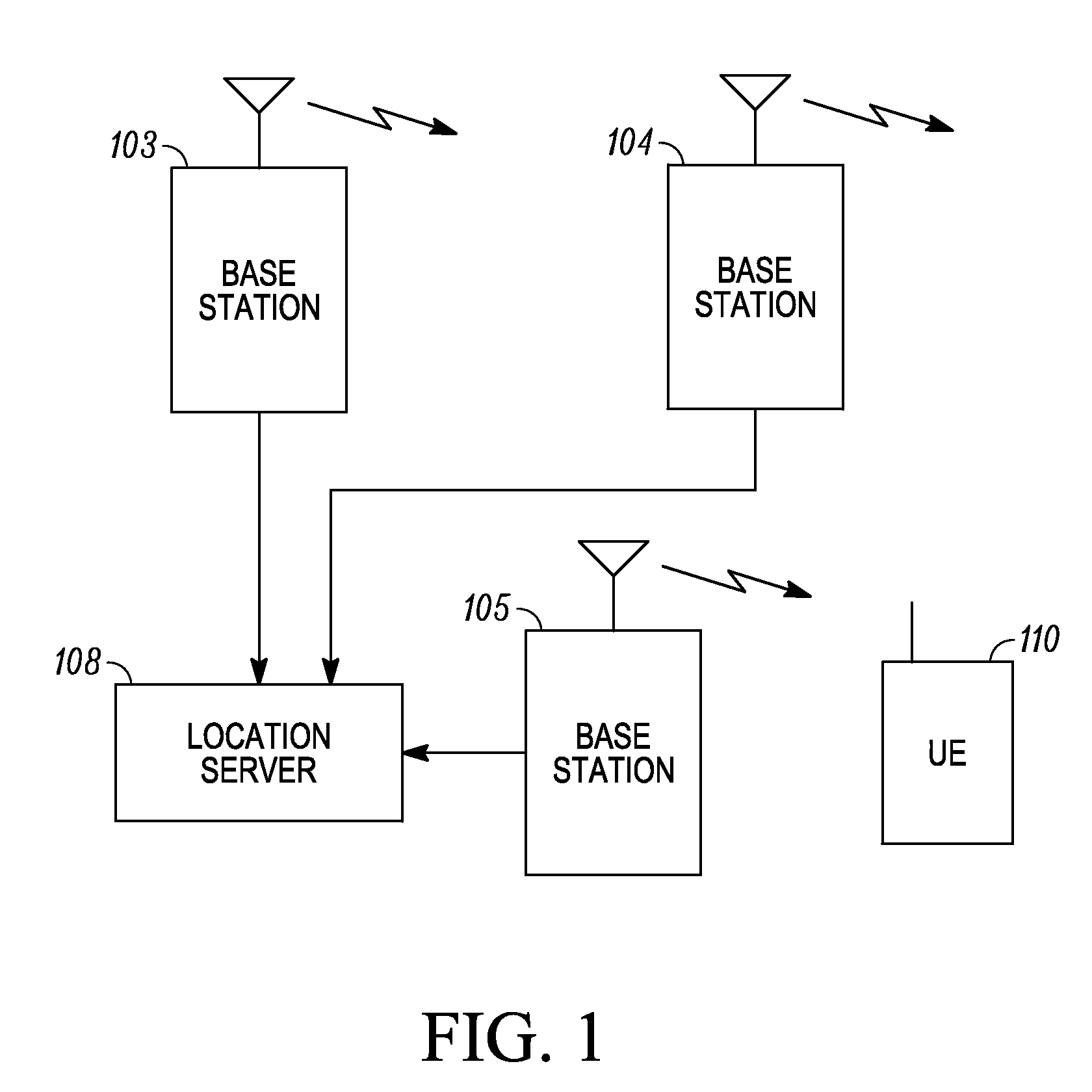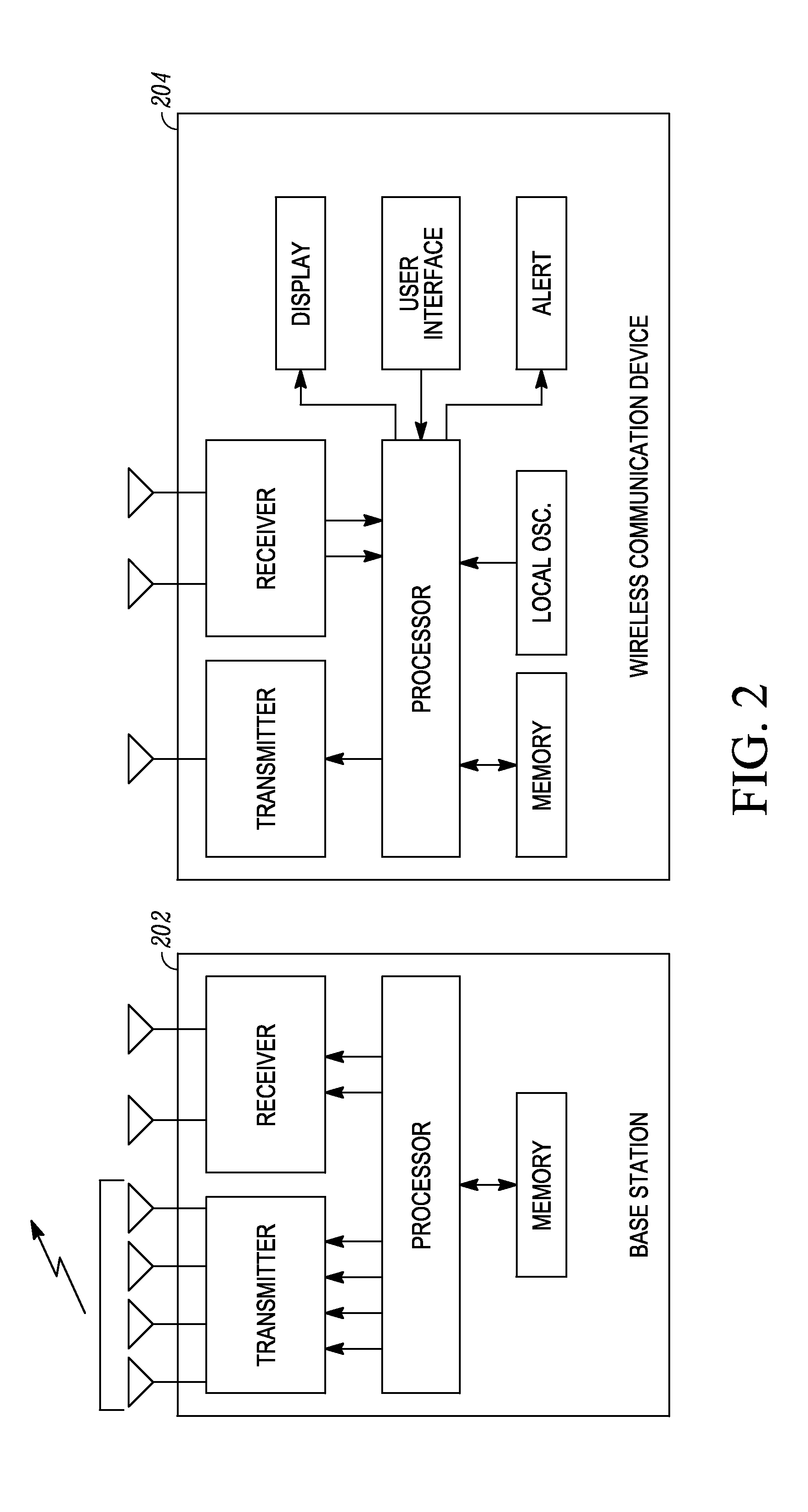Interference Control, SINR Optimization and Signaling Enhancements to Improve the Performance of OTDOA Measurements
a technology of interference control and optimization, applied in the direction of instruments, high-level techniques, wireless commuication services, etc., can solve the problems of ineffective gps receiver, inability of gps receiver to receive signals from an appropriate quantity of gps satellites, and the need for wireless devices operating in such systems
- Summary
- Abstract
- Description
- Claims
- Application Information
AI Technical Summary
Benefits of technology
Problems solved by technology
Method used
Image
Examples
Embodiment Construction
[0026]Aside from enhancement of the basic reference signal sequence, the OTD waveform observability (i.e. SINR) using inter-cell (including inter-sector) coordination methods, such as COMP methods can also be optimized.
[0027]One embodiment disclosed herein includes a method of inter-cell, or inter-sector, enhanced observed time difference (OTD) signal transmission coordination. For example, a plurality of eNBs 103, 104, 105 (FIG. 1) transmitting enhanced OTD measurement signals may do so jointly—e.g. occupying the same, or related but jointly or co-scheduled time-frequency regions. If the identical time-frequency region is used, a single “virtual” eNB for the purposes of OTD measurements may be reported by the UE 110. Such a “virtual” eNB may employ an OTD measurement waveform, or sequence, distinct from that of the eNBs comprising the joint transmission. Such joint transmissions may preferentially be done using synchronous transmitters operating under the control of the same eNB—fo...
PUM
 Login to View More
Login to View More Abstract
Description
Claims
Application Information
 Login to View More
Login to View More - R&D
- Intellectual Property
- Life Sciences
- Materials
- Tech Scout
- Unparalleled Data Quality
- Higher Quality Content
- 60% Fewer Hallucinations
Browse by: Latest US Patents, China's latest patents, Technical Efficacy Thesaurus, Application Domain, Technology Topic, Popular Technical Reports.
© 2025 PatSnap. All rights reserved.Legal|Privacy policy|Modern Slavery Act Transparency Statement|Sitemap|About US| Contact US: help@patsnap.com



